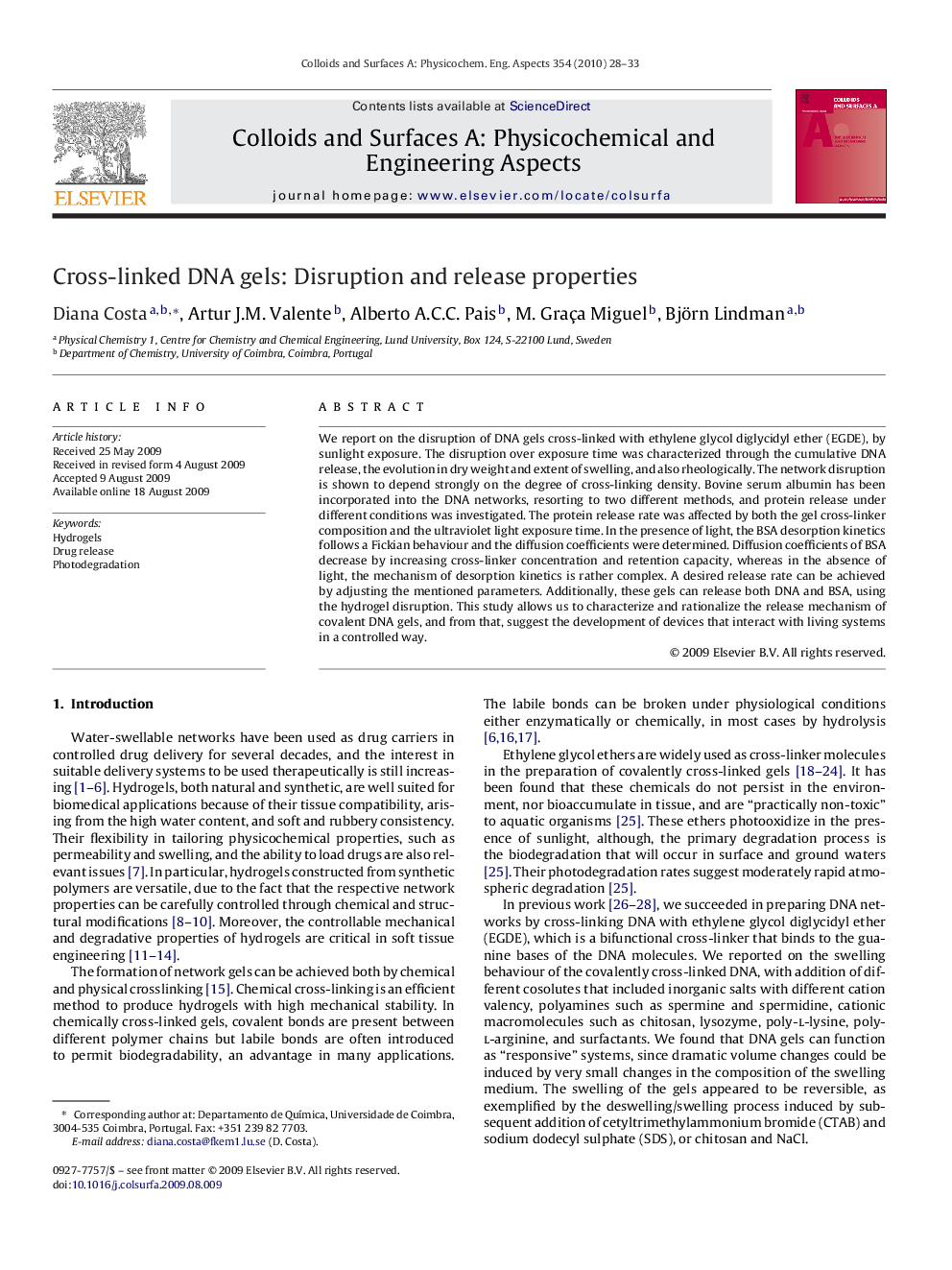| Article ID | Journal | Published Year | Pages | File Type |
|---|---|---|---|---|
| 595601 | Colloids and Surfaces A: Physicochemical and Engineering Aspects | 2010 | 6 Pages |
We report on the disruption of DNA gels cross-linked with ethylene glycol diglycidyl ether (EGDE), by sunlight exposure. The disruption over exposure time was characterized through the cumulative DNA release, the evolution in dry weight and extent of swelling, and also rheologically. The network disruption is shown to depend strongly on the degree of cross-linking density. Bovine serum albumin has been incorporated into the DNA networks, resorting to two different methods, and protein release under different conditions was investigated. The protein release rate was affected by both the gel cross-linker composition and the ultraviolet light exposure time. In the presence of light, the BSA desorption kinetics follows a Fickian behaviour and the diffusion coefficients were determined. Diffusion coefficients of BSA decrease by increasing cross-linker concentration and retention capacity, whereas in the absence of light, the mechanism of desorption kinetics is rather complex. A desired release rate can be achieved by adjusting the mentioned parameters. Additionally, these gels can release both DNA and BSA, using the hydrogel disruption. This study allows us to characterize and rationalize the release mechanism of covalent DNA gels, and from that, suggest the development of devices that interact with living systems in a controlled way.
